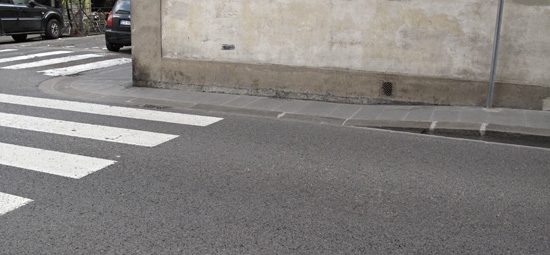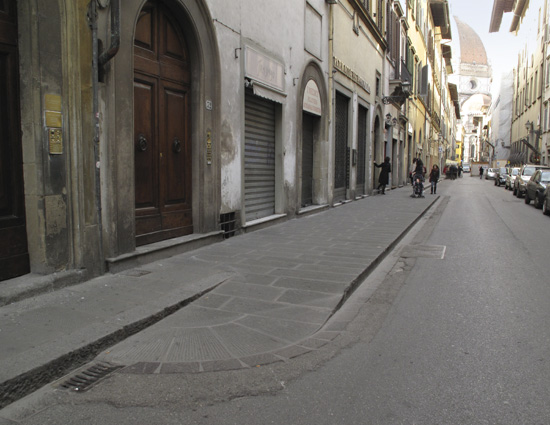
by Maureen | Jun 7, 2012 | Cheese, Featured Articles, Firenze, Food!, Incredible Locations, Italy, Journal, Meals, Milano, Photos, Shopping & Markets
This is real Italian food. They’re not over here just eating pizza and spaghetti. And they’re NOT eating “Fettucine Alfredo”! (If you see it on a menu, it’s only there for the tourists.) The range of Italian food is so vast. It truly does change every hundred kilometers. And most of it is nothing like seen in “Italian Restaurants” in the U.S.
When here, I eat everything that’s regional and typical to an area. I eat what I can’t get in Seattle. As I travel and seek out a meal, I always ask what the local specialties are and then expand my view of “Italian Food”. Here’s a sampling of what I’ve eaten in the last three weeks.
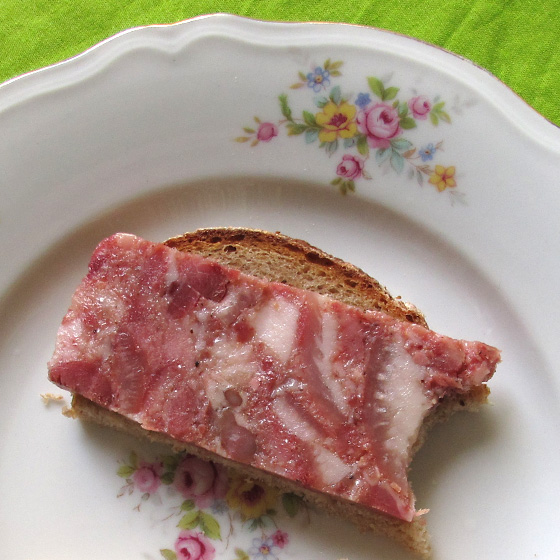
Soprassata Fiorentina • “Head Cheese” from Florence. I had this when living here a couple of years ago. Found it at a street market with no refrigeration, no running water. This is made of all the extra “head parts” that are cooked and congealed together with seasoning. Mmm. Yummy on a slice of bread. Must be 99% fat.
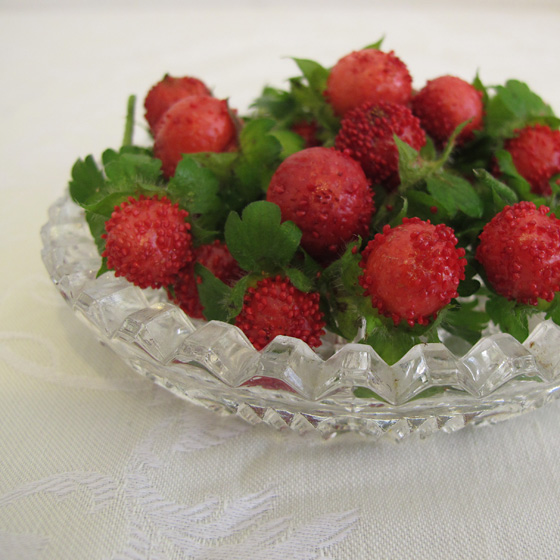
Fragolini • Little, wild strawberries found growing in the weeds in my courtyard. Actually, they had very little flavor, but I have seen them being sold at the market.
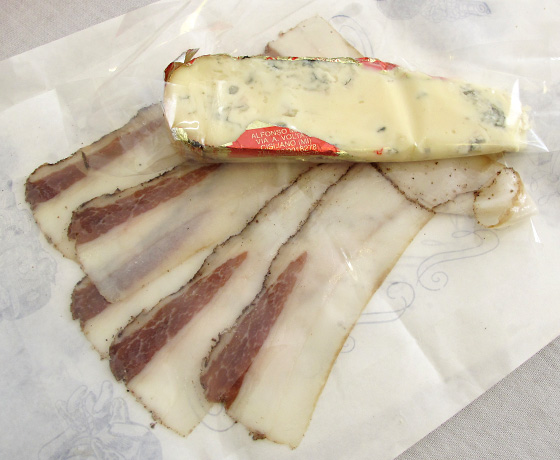
Lardo di Colonnata and Gorgonzola Dolce • Aged, seasoned lard (below, with a streak of meat), and creamy, mild “Sweet” Gorgonzola cheese (above). Both fantastic on a good hunk of bread. (Who needs butter?!)
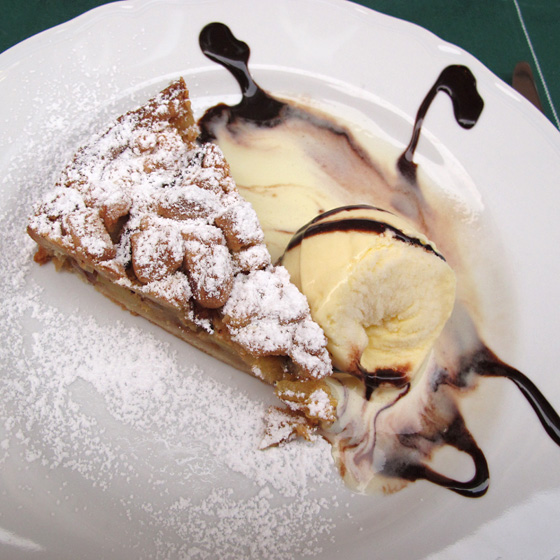
Torta di Mele, con Gelato di Vaniglia • Apple Tart with Vanilla Gelato. A rare, sweet splurge for me.
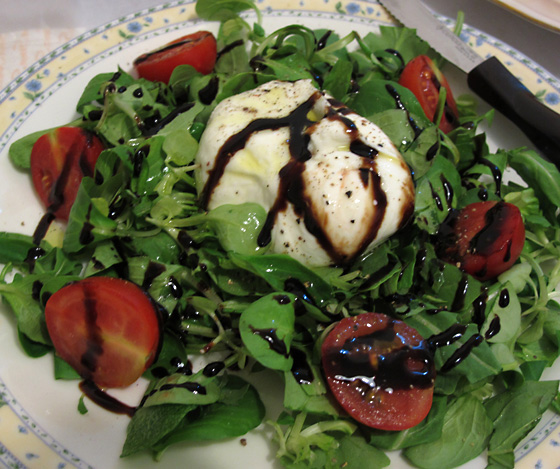
Insalata di songino, pomodori e burratina con olio e aceto • Salad of “lamb’s lettuce”, cherry tomatoes and “burratina” cheese, drizzled with olive oil and a thick balsamic “cream”. Burratina is a small version of “Burrata”, a fist-sized ball with an outer layer like fresh mozzarella about 1/8″ thick, containing soft, creamy/runny, semi-solid cheese within. Heaven on a bed of greens!
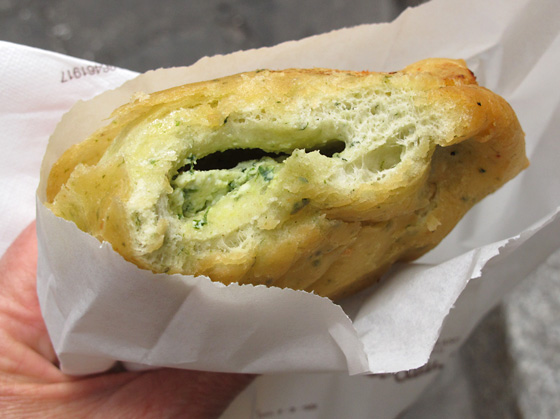
Panzerotto Luini • Deep-fried bread pocket (filled with spinach and ricotta) from Luini’s by the Duomo. Inexpensive, hand-food that the locals all know about. Carry it around and eat it while walking.
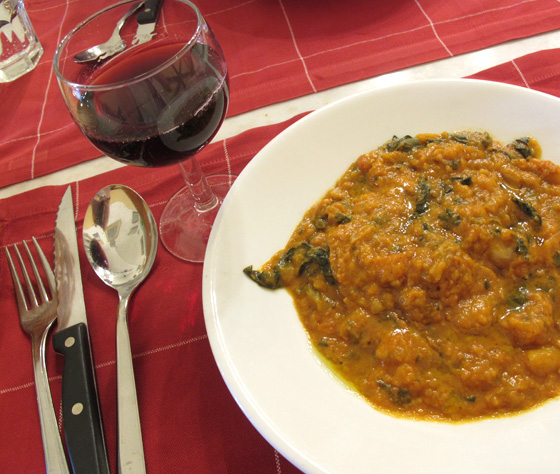
Ribollita • Tuscan bread and vegetable soup, eaten in Firenze (Florence). The name means, literally “reboiled”.
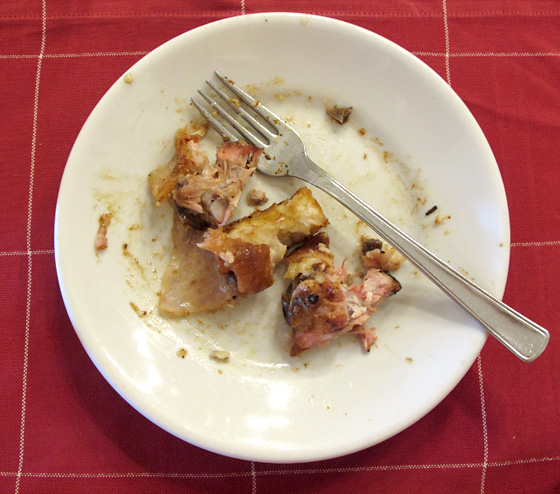
Spiedina di carne mista • It WAS a skewer of mixed meats, in this case sausage and pork, eaten in Firenze.
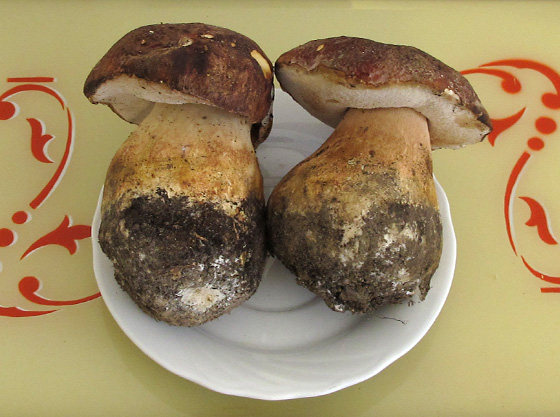
Porcini • Two porcini mushrooms for 12 Euro at the street market (about $15!) All the time that I had lived here I never bought fresh porcini! I had to splurge at least once.
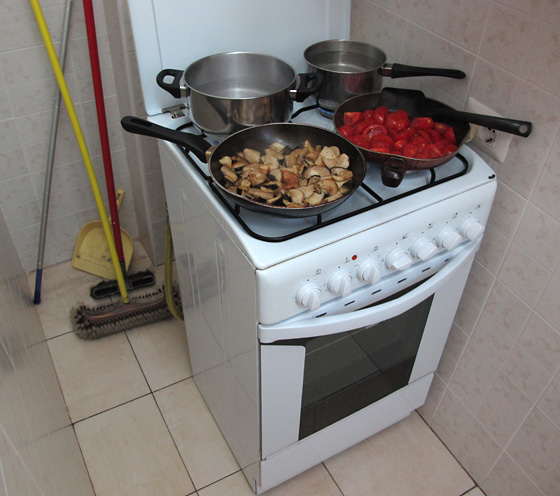
Porcini e Pomodori • Porcini and tomatoes (and brooms), cooking in my 35″ wide kitchen/broom closet. I brought the porcini home and cooked them up; also sauteéd some fresh cherry tomatoes.
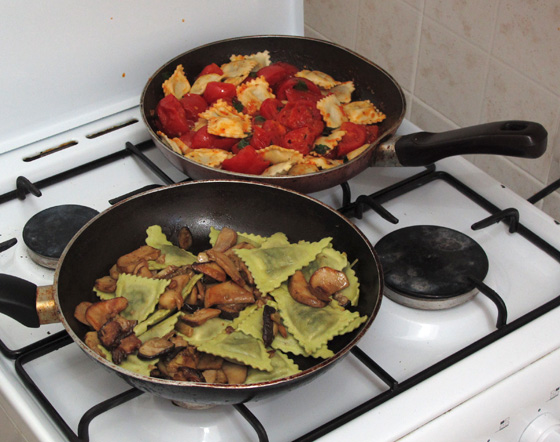
Porcini with vegetable ravioli, and sauteéd fresh cherry tomatoes with meat ravioli, fresh from the street market.
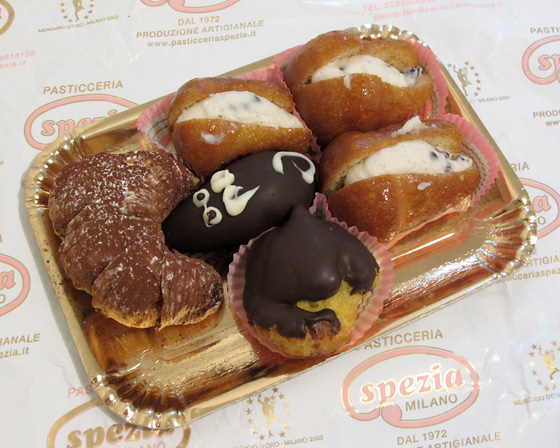
Pastries from Spezia Pasticceria. My favorites are the Babá in the upper right: sponge cakes absolutely drenched with sweetened rum, with sweet ricotta filling in the middle. One bite and the rum sauce runs down your arm.
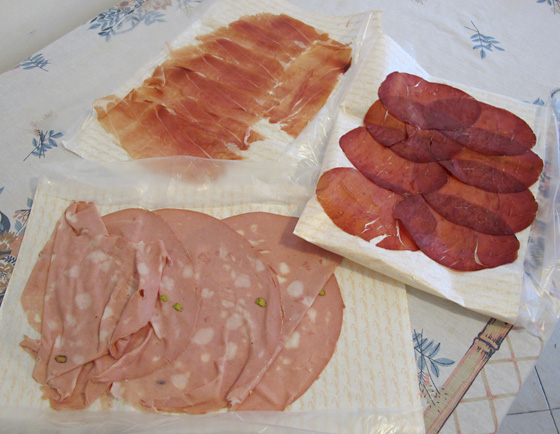
My favorite meats (clockwise from the top): Prosciutto (Crudo, di Parma), Bresaola, Mortadella with pistachios. It’s an art ordering your prosciutto cut! The bresaola is 100% lean (also available in horse meat). Mortadella: think “baloney” from when you were a kid, then multiply by 100. This mortadella has pistachios and peppercorns in it, and yes those are chunks of (white) fat.
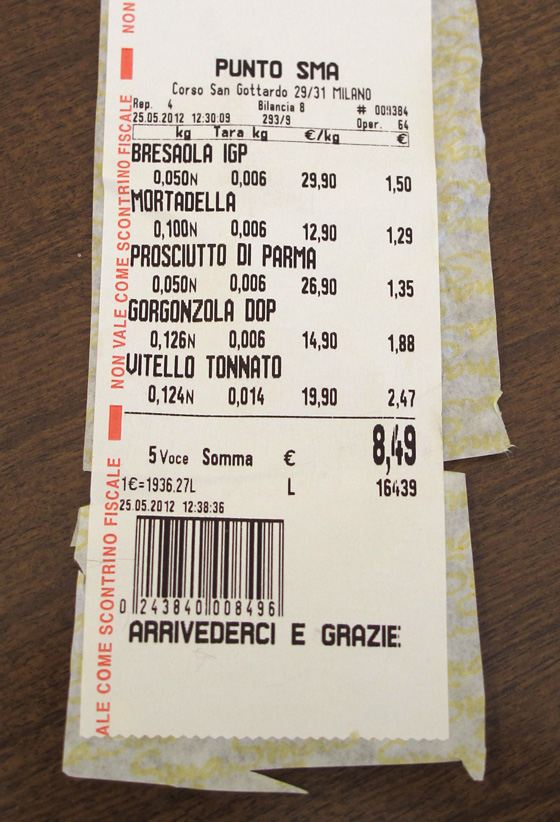
Here’s the receipt for the meats above: 50 grams of Bresaola for 1,50 euro; 100 grams (“un etto”) Mortadella for 1,29 euro; 50 grams of Prosciutto di Parma for 1,35 euro. I had also bought “Gorgonzola Dolce”, the gooey, creamy, mild gorgonzola for 1,88 euro, and “Vitello Tonnato”, thin-sliced, roasted veal with a pureed tuna mayonnaise sauce on top for 2,47 euro. This was several days’ food for a girlfriend and me for 8,49 euro, about $10.66. (Makes up for the cost of the porcini.)
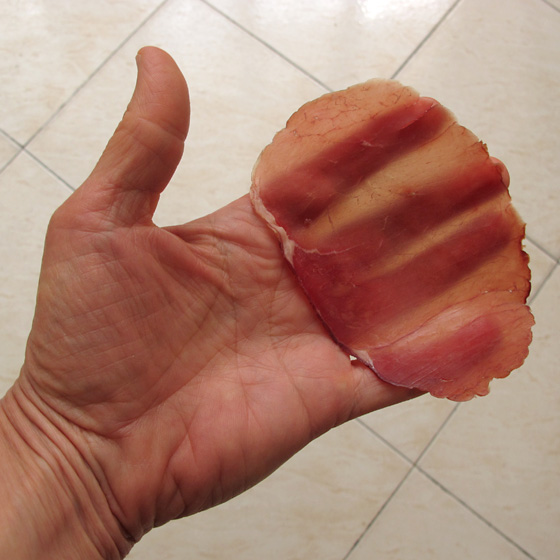
Bresaola, my favorite. An air-dried, salted beef that has been aged 2-3 months. Almost completely lean, no fat. Sliced paper thin, and when it’s very good, it is moist and supple, not dry and leathery. Note how translucent it is! I can’t buy Italian Bresaola in the U.S. Too many fears of “mad cow disease”.
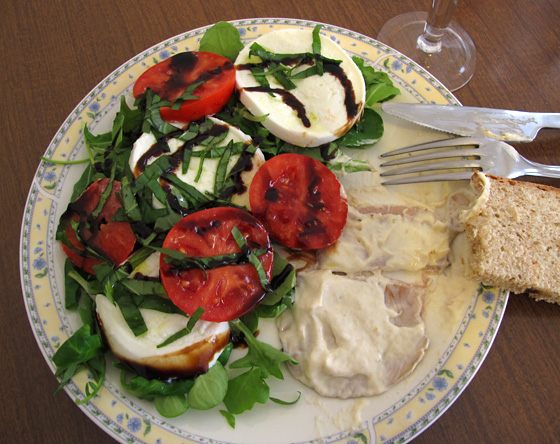
Insalata con mozzarella di bufala, pomodori e basilico. Vitello tonnato • A salad with fresh mozarella di bufala (yes, buffalo milk), tomatoes, basil, served with “vitello tonnato”, the thin-sliced veal with pureed tuna/mayonnaise sauce.
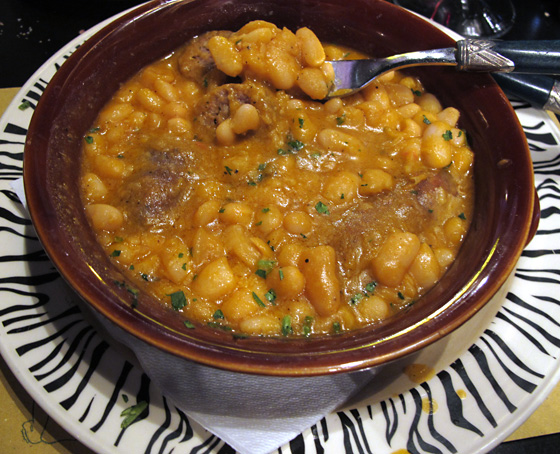
Salsiccia e fagioli • Sausage and beans, a very Tuscan meal eaten in Firenze.
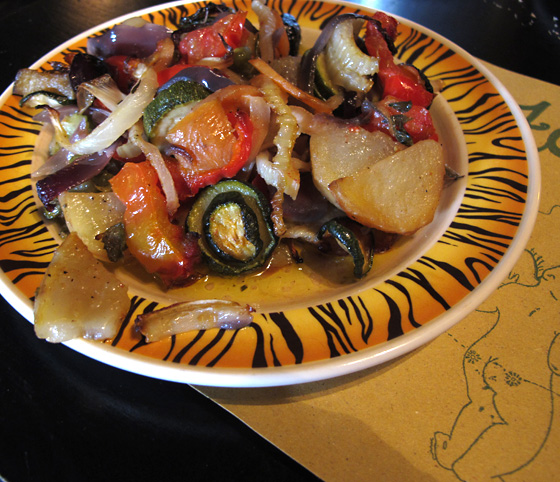
Verdure al forno • Tuscan oven-roasted vegetables, in Firenze.
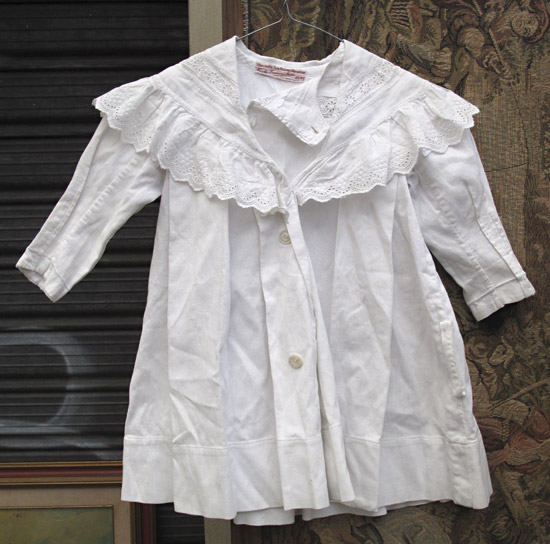
by Maureen | Mar 30, 2010 | Featured Articles, Firenze, Incredible Locations, Journal, Photos, Shopping & Markets
A month ago I was given a hot lead from a girlfriend in Seattle about flea markets in Firenze. What I uncovered through some digging was that the “hottest” market happens on the last Sunday of the month, in the Piazza dei Ciompi, just a few blocks’ walk east of the Piazza del Duomo. OK. That little fact determined the timing of my return visit to Firenze.
I even set the alarm Sunday morning(!), ate a quick breakfast and started walking the mile to the piazza. Along the way, I kept seeing people carrying branches and scratched my head over that. Hmm. Oh! It was Palm Sunday but they were carrying olive branches, not palms! I stepped into the Basilica della Santissima Annunziata mere moments before mass started and witnessed the procession of priests and parishioners.
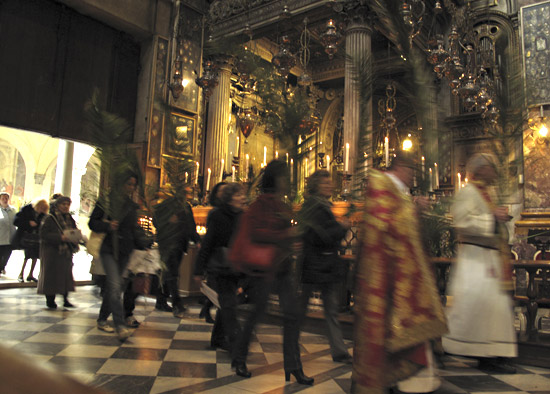
The portico between the church and the “cloister of the dead” offered a heaping bale of olive branches, so I plucked a few little twigs to carry in my pocket, then continued my mile walk.
When I arrived at the Piazza dei Ciompi, I found many of the things I expected AND I found most everything I was looking for. On the last Sunday of the month, the flea market spills out into the side streets, populated by many of the local antiques dealers surrounding the piazza. There are the vendors that know what they have and charge high prices accordingly. And there are those that have a mixed pile of junky tidbits with a “treasure” tucked in here and there. The concept must be universal among flea markets and swap meets.
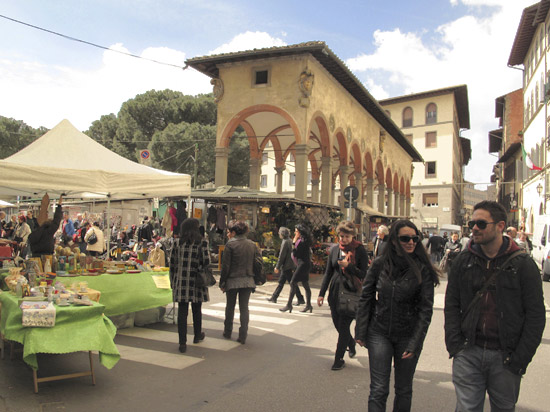
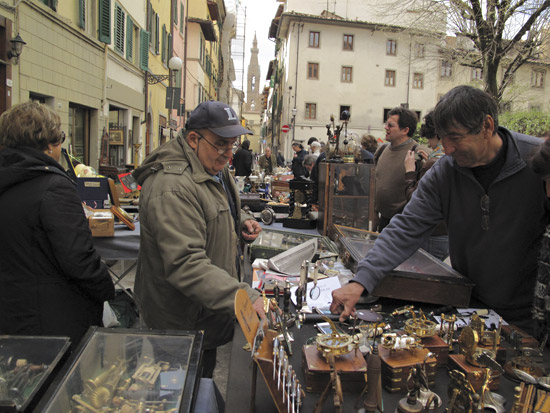
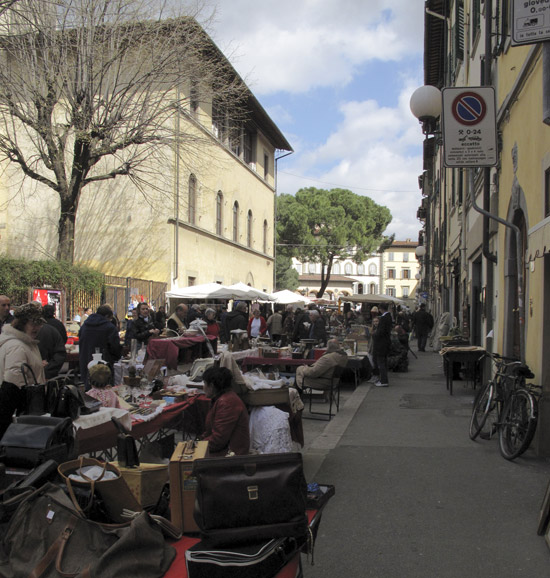
Of course there were iron pieces, linens, books, figurines, clothing, costume jewelry, housewares and miscellanea. What I went in search of were red-stitched linens (thinking of my great, great grandmother and Frette linens) and old penmanship guidebooks. I found both! What I didn’t find are the meat and milk signs like I’ve seen hanging outside markets around the country. I’d gladly hang them outside my door at home in Seattle!
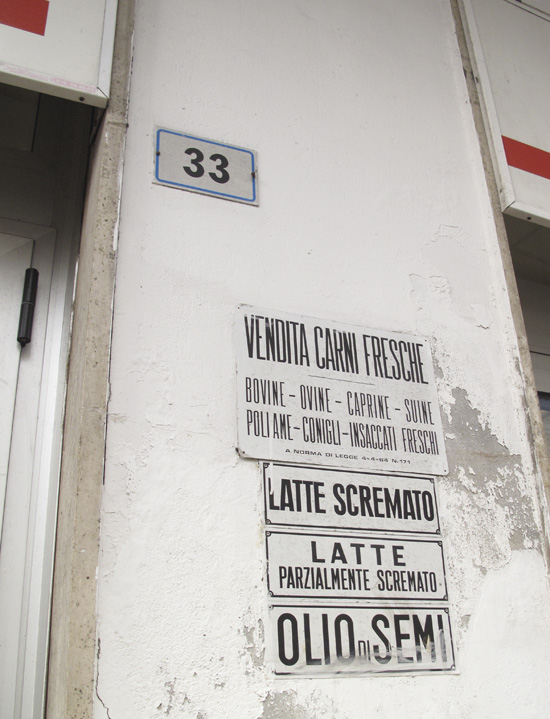
Look at these hat forms! The vendor had about a dozen of them. Many different hat shapes. Beautifully-sculpted hardwood! If I remember right, they were selling for about 80 euro each (about $107).
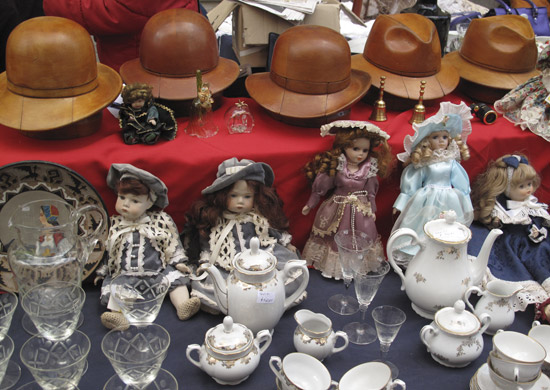
Years ago, both of my Grandmas let me paw through their button boxes and select my favorites. I now have a collection of thousands of buttons, especially mother-of-pearl. I dig into my collection when I’ve sewn something and need just-right buttons. When I saw these boxes full of buttons, I was hopeful, but in the end unwilling to pay 50 cents per pearl button.
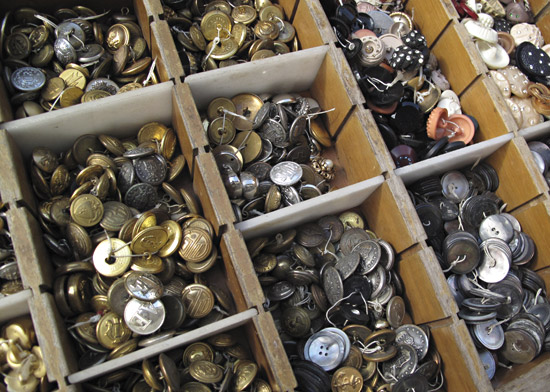
This lovely, white, cotton-with-eyelet dress from Roma was hanging toward the back of one seller’s stall. Darn. It wasn’t for sale. I would have brought it home to little 5-month-old Audrey, whom I haven’t even met yet (!)


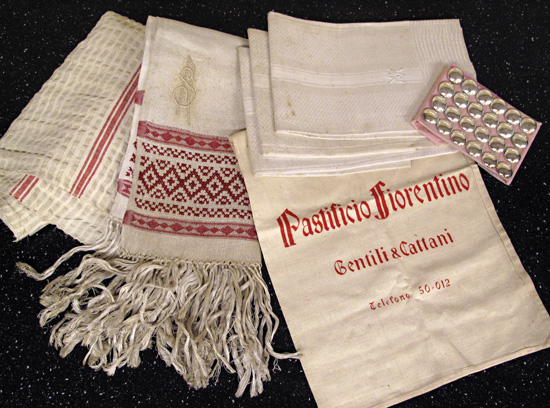
by Maureen | Mar 30, 2010 | Discoveries, Featured Articles, Firenze, Incredible Locations, Journal, Photos, Shopping & Markets
It was as a Camp Fire Girl in fifth grade that I learned to sew by stitching along the lines of binder paper. I’ve been sewing by machine and by hand ever since and fabric is one of the things that makes my heart rate pick up. (Literally.) So, put me in a place where I can find antique fabric, handwork and sewing “notions” and I think I’ve gone to heaven. I passed up some red-on-white cross-stitch samplers from the late 1800s either because they weren’t well-wrought, or the price was higher than I was willing to spring for. I did bring home this little bundle which I will wash up and actually use: embroidered hand towels and napkins, sterling buttons and a muslin flour sack. (I’m easily amused.)

Can you believe I found MY initials embroidered?!
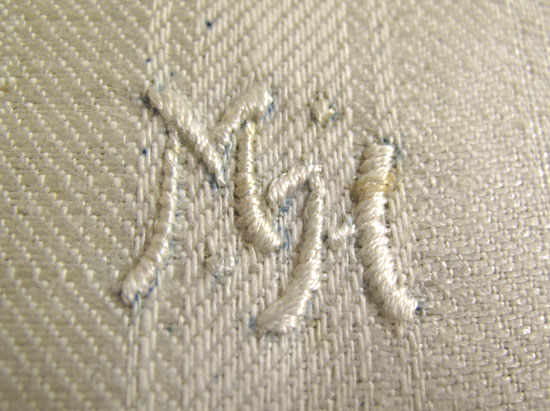
There was a box of about 10 dozen sterling silver buttons produced for Italian military uniforms. Each is marked with “Milano” on the back, which I think is more beautiful than the high-polish front. (I’ll take steel wool to the surface to rough them up, then use them on a special jacket I’ll make.)
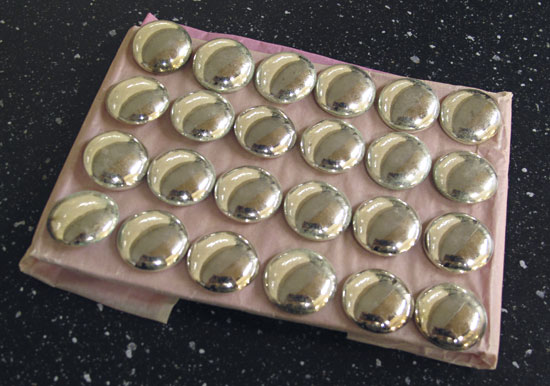
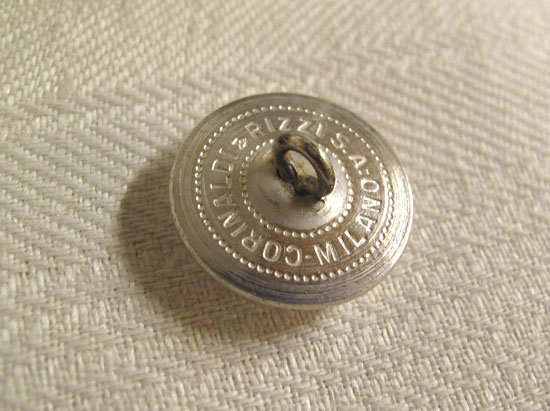
This is elaborate raised stitching on the damask, woven patten.
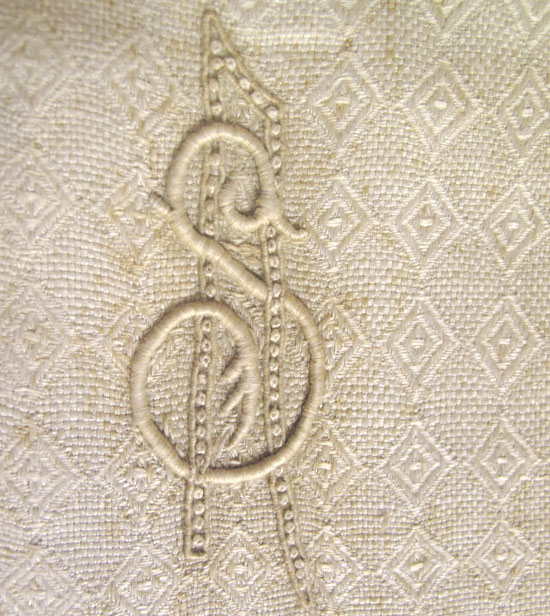
This fringed towel features hand-wrought, counted cross-stitch in between two woven borders.
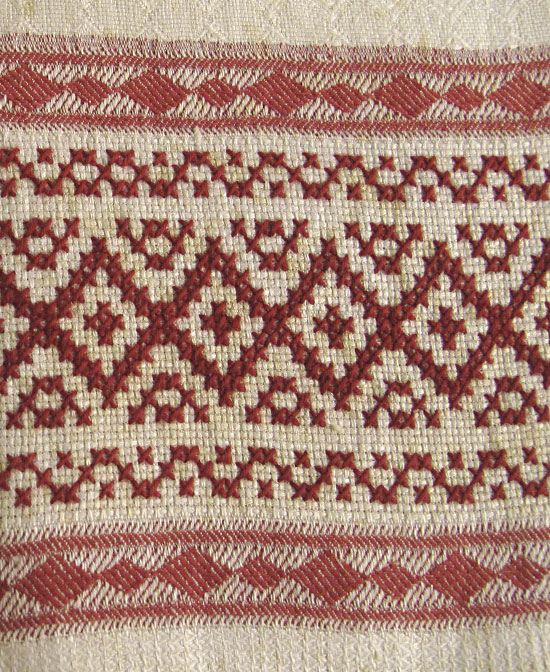
This was a sign on the door of a little shop where they do “polishing, lacquering, restoration and gilding” and sell antique furniture and frames. “Excuse me, would you be willing to sell your sign?”
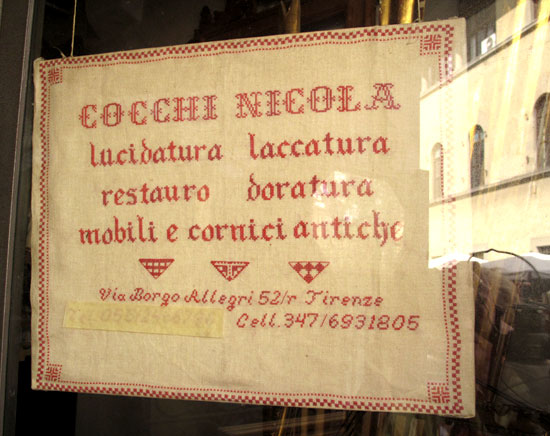
The sellers of this piece were out to lunch. I waited around but they didn’t return, so I simply photographed it. This is a religious symbol for Mary, Mother of God. The “AM” monogram stands for “Ave Maria”. I’ve seen this symbol other places in Italy, such as the cathedral in San Giovanni Valdarno when I was there 2 years ago.
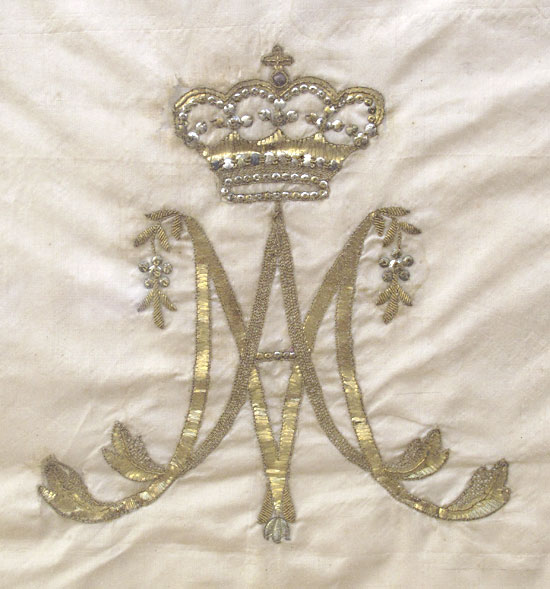
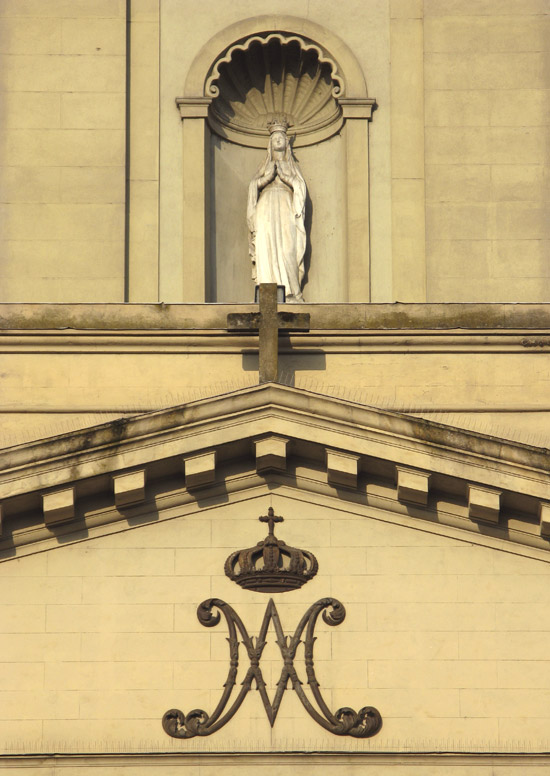
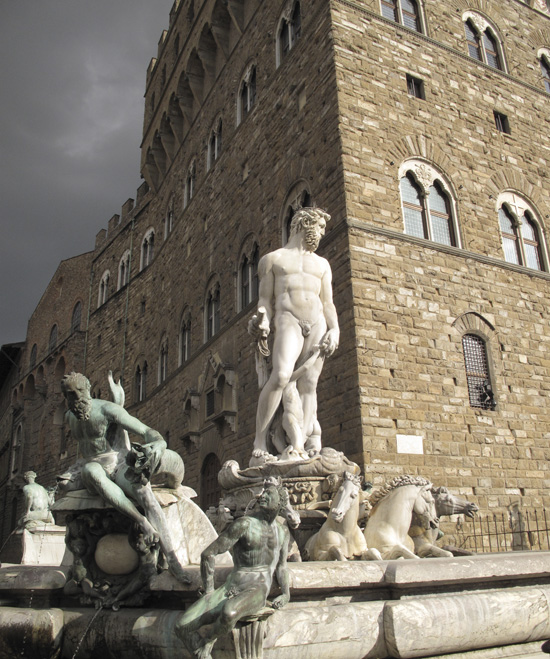
by Maureen | Mar 30, 2010 | Discoveries, Featured Articles, Firenze, Food!, Incredible Locations, Journal, Meals, Photos, Shopping & Markets
If you haven’t been to Firenze (Florence), put it on your “life list” of must-see places in the world. Really.
Two years ago I spent a couple of afternoons exploring Firenze, but I hadn’t been back since I returned to Italy last June. So I hopped on the train late last Friday morning, and less than two hours later, at 1:00, I arrived in Firenze and smiled. I walked from the train station to my hotel shooting photos along the way because I couldn’t wait until I put my bags down. I checked in, changed my clothes for the bit of humidity under the partly sunny skies, then left and took off walking for the next five hours.
If I were to move to Italy NOW, or want to relocate to another spot, I would pick Firenze.
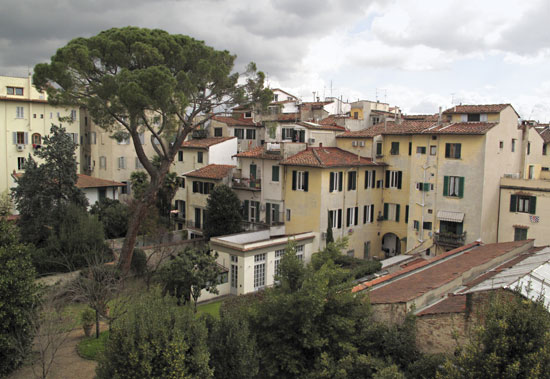
Excerpts from my journal Friday night, 26 March 2010 , while resting my feet and having a delicious dinner:
“I love Firenze! At this point, with what I know and with my familiarity and my language, I’d move to Firenze. Milan was a great place to land and gave me anchors. I find much to interest me there. My camera is always at my side and I can stay as busy as I wish, but in just an afternoon, Firenze has thrilled me with its visuals, much the way that Venezia does.
“It’s very definitely a tourist town! I think that Spring/Easter vacations have begun because the clustering tour groups are everywhere and unavoidable. (I thought that, late March, I’d still be missing them all.)
“Firenze – Florence – is ‘tighter’. Narrower streets close into the center of town around the Duomo, and many ‘pedestrian-only’. the selection of little shops, restaurants and curious places gives much to explore without going far. The antiquity is a saturated wash over the town and gives it a texture that is lush across-the-board. Like Venezia, I could photograph here forever.
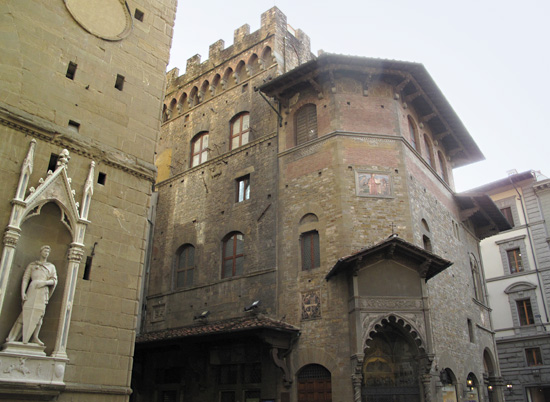
“I’m sitting at a table for two at Zá-Zá, a lovely, dar, funky, delicious trattoria just blocks from my Hotel Caravaggio. There’s been a table of four sitting near me having their meal, their drinks and their desserts. I smiled at them once… As they were leaving, the woman that had been nearest to me said goodbye – ‘Arrivederci‘. That tickles me.” (I highly recommend both the restaurant and the hotel.)
Excerpts from my journal Sunday afternoon, 28 March 2010 , on the train heading home to Milano:
“I had an incredible, full time in Firenze. So glad to have gone back, and with only an hour and 45-minute train ride, I could come for a day if I wanted to, or just an overnight.
“The city of Firenze, though packed with tourists, seems to have a quite comfortable parallel world of locals that go about their days and their work. With transportation and services so readily available, Firenze seems quite livable and pleasant.
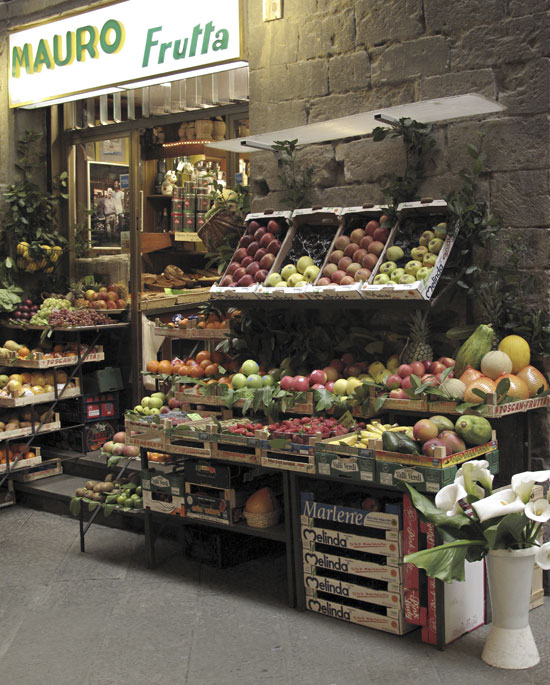
“I very quickly got the-lay-of-the-land and covered much of the “Centro Storico” – the historic center of town – in my two days there, walking close to 20 hours overall.”
Yesterday evening, a friend asked by e-mail, “Should Florence be on my to-do list? What did you especially like about it?” I responded with an off-the-cuff, spontaneous list:
Everyone’s on foot or bike! The whole historic center, large radius, is almost all pedestrian-only with very few cars and some half-size, mini-buses. Walk everywhere. (I don’t think there IS a subway, but lots of public transportation.) Streets are narrow and closer in for easy strolling. NO traffic to even have to think about.
Absolutely fascinating art, history, culture, architecture at EVERY turn!
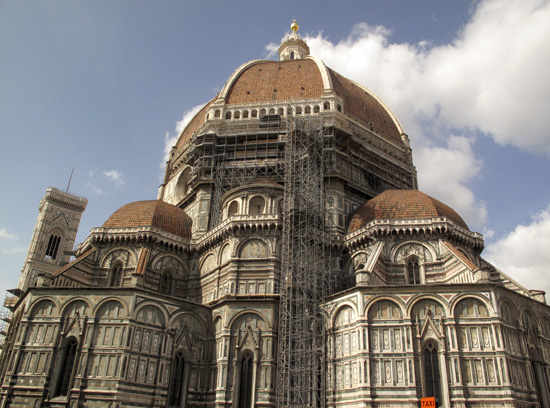

Historic sites. Historic art: Michelangelo’s David. Botticelli. Caravaggio. Dürer. Giotto. Leonardo. Lippi. Raphael. Rembrandt. Rubens. Titian. And so many more!
Visually lush. Vital, Small-city-energy.
VERY tourist-oriented (which I didn’t like having the vacation tours already swarming) but it felt like there was a parallel universe happening of people just going about their lives.
Florence doesn’t have the crazed-busy-frenzy of business-minded Milan.
Cool stuff for curious kids and adults alike. Sundials and crenulated towers.
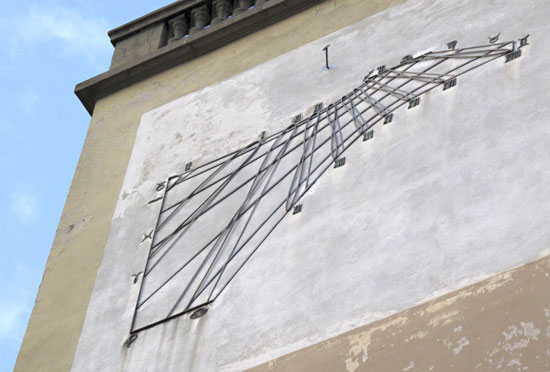
Good gelato.
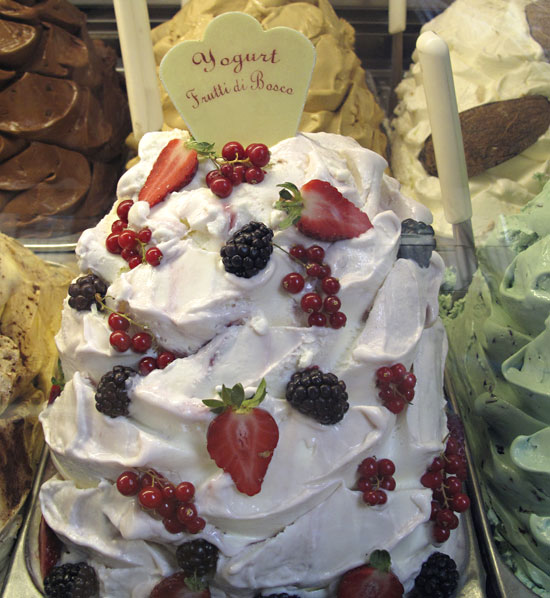
Neat bridges.
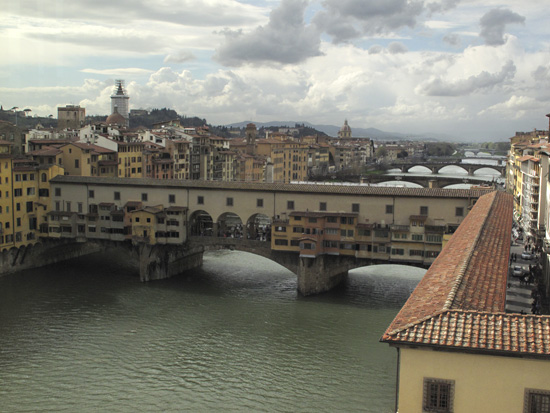
Street markets selling you-name-it.
Good cow-stomach sandwiches. (Lampredotto.)
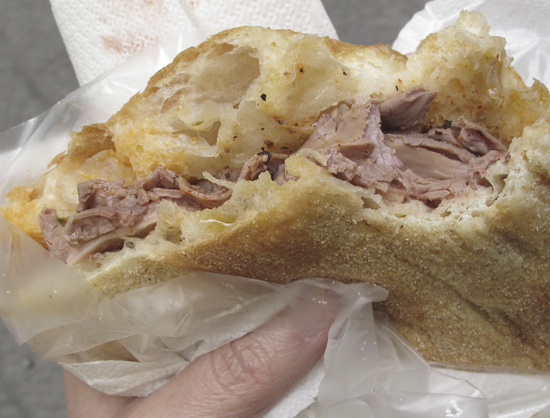
The heartland of the Renaissance.
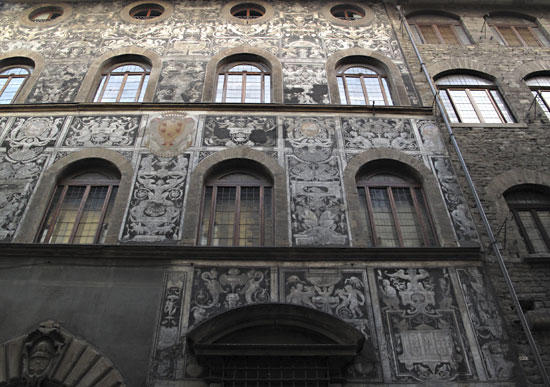
Oh. And they have curb-cuts designed for uninterrupted walking.
